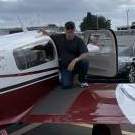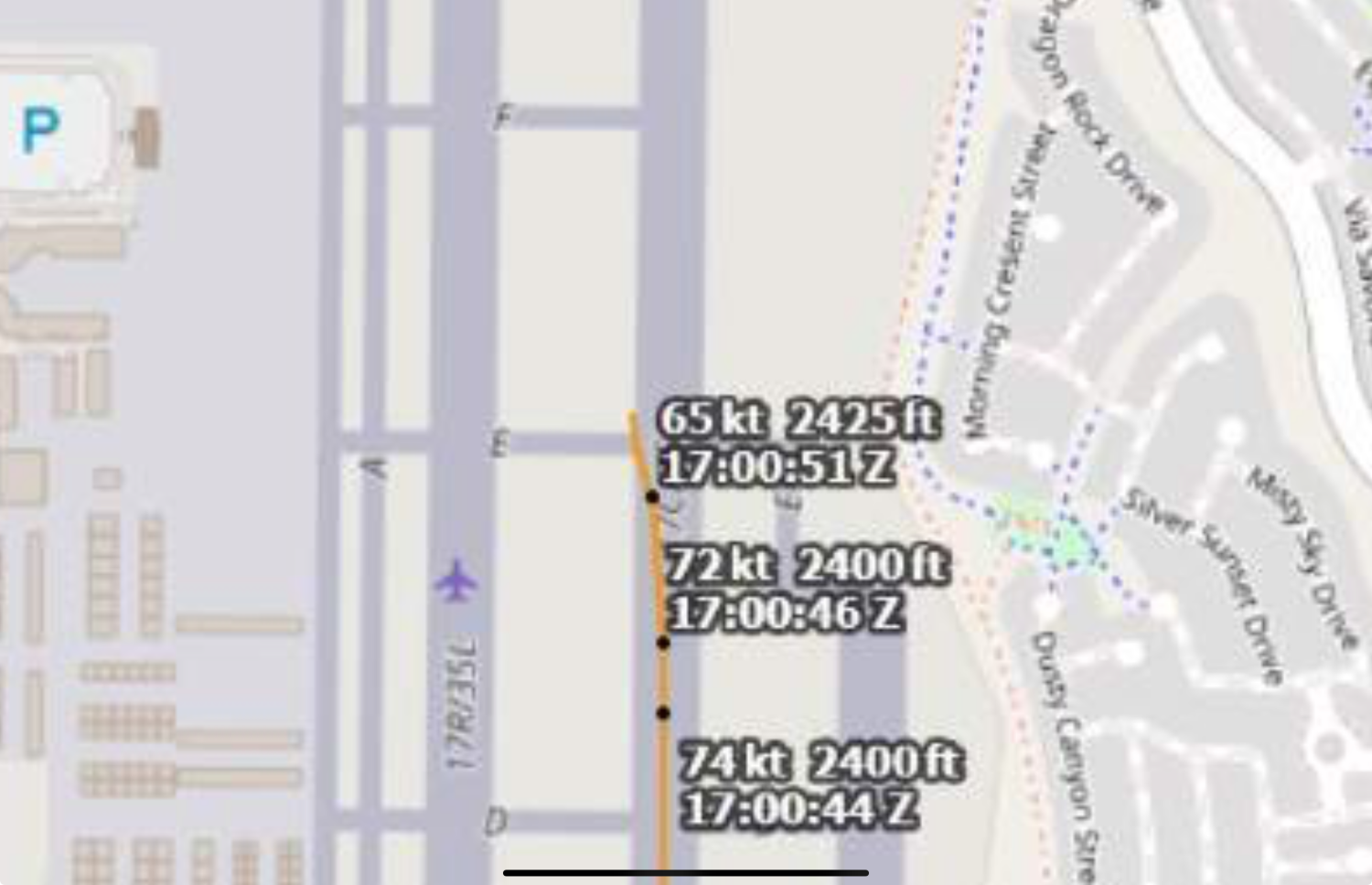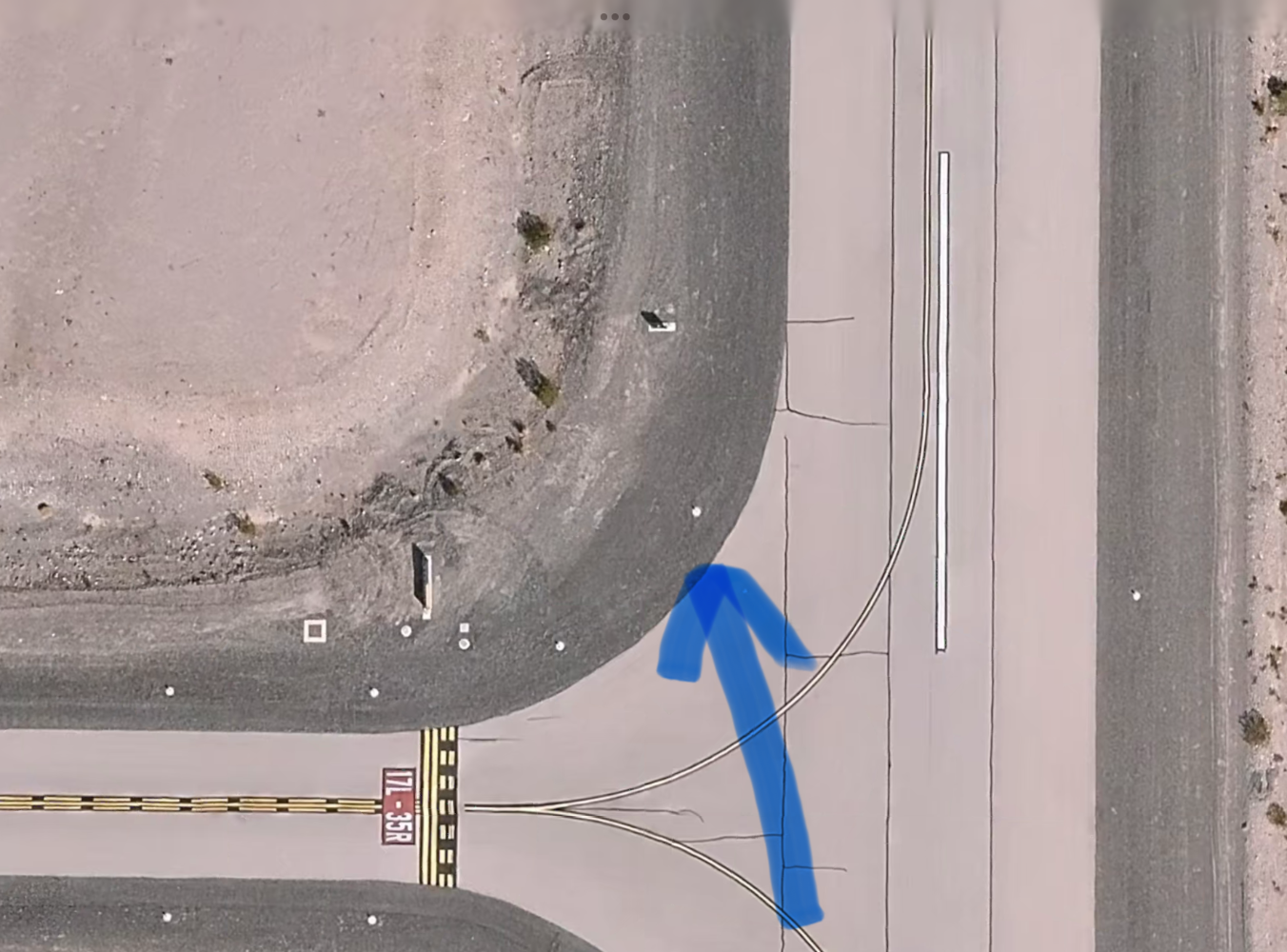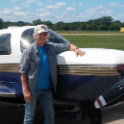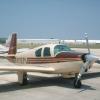All Activity
- Past hour
-
ad5ut started following WTB - 2 x Continental 653332 V-Band Clamps
-
Hi folks! I got myself into a pickle with the V-Band clamp AD on a new-to-me 231 with a TSIO-360-GB engine that can't use the PMA clamps. While I don't realistically expect any to turn up, I figured I would at least throw out this offer in case somebody had the foresight to buy a few extra when the AD came out or is in a position to use the PMA clamps and pass along their Continental parts at a suitable premium for my stupidity. I'll buy new clamps with documentation for $3,000 per clamp. I'll also pay a pro-rated amount for serviceable clamps (must pass the AD inspection) with documented time in service of 400 hours or less. I would also pay $500/ea plus overnight shipping for serviceable clamps over 500 hours TIS if I can get them quickly enough to move the plane 5 miles before the AD deadline. Purchase of used clamps are subject to the shop I'm stuck at agreeing to install them IAW part M of the AD.
-
If you have been cyber stalking me on FlightAware, you know I haven't been flying much lately. Between my new shoulder and way too many periodic inspections and installing a new audio panel, me and the plane have been down for a while. So I decided to take a long cross country. Sorry, no pictures. The wife and I decided to fly to a Savannah GA. I got IFR current, the plane is IFR current and all my databases are up to date. We flew all the legs out there VFR so we could listen to an audio book. I should have flown the last leg IFR but I didn’t. We decided to fly the first day to Hot Springs AR. We got the last hotel room available in KHOT. We could have stayed in the fanciest suit in a 4 star hotel for what we paid for that POS room. The whole town turned out for the fireworks display. It was refreshing to see small town America in action. We got a seat on the patio at a Mexican restaurant near our hotel. We ordered a beer, chips and salsa and had a great view of the fireworks. Both legs getting to KHOT were flown at 13500. We were getting about a 15 KT Tailwind the whole way, so we were scooting along pretty good. The next morning we decided to do two legs to get to get to Savannah. We could have done it in one, but we don’t like to fly that long any more. We flew to Walker Co airport in Jasper AL at elevendy five and got lunch at the Pie Factory. It was great pizza. The crew car is a brand new Jeep Renegade, which was kind of fun. The leg to Savannah was a little more dicey. I tried to do 11500 , but the clouds kept rising and they were getting thicker. I didn’t want to get stuck on top and have to get a pop up IFR, so I just went under. It was more scenic that way anyway. And besides, there were thunderstorms ahead and I would much prefer to be VFR around thunderstorms than IFR, you have a lot more options. I had to deviate around a couple including a big one about 40 miles west of KSAV. On final there was a big one approaching from the north. The rain shaft was already covering the north half of runway 01 and the tower when I landed on 10. It was a bit sporty. After I landed the tower asked for a PIREP. They sounded very concerned. I told them it was moderate. When we got to Sheltair, it was pouring. They were nice enough to come out with umbrella's. Anyway, we are here enjoying the area. I will write another post on the way back. I may even take some pictures.
-
Rocket in landing incident at KHND.
IvanP replied to NickG's topic in Mooney Safety & Accident Discussion
How much ground effect do you get at 50 ft AGL? - Today
-

Rocket in landing incident at KHND.
donkaye, MCFI replied to NickG's topic in Mooney Safety & Accident Discussion
Very nose heavy. -
What fuel flow are you seeing with takeoff power setting? Assuming 280hp (full throttle, full rich, 2500 rpm at sea level), in my experience if it's less than about 23.5 GPH (per Mooney) it's set too low. CMI says 22.5 max but that's a little low, my guess is to make fuel consumption numbers look better (see Continental M-16 and Mooney MAN161). If you can lean it out in cruise and get significantly lower CHTs with smooth operation then it's likely a fuel setup problem. Previous owners of my plane were based in Glenwood Springs CO at 5916 MSL, and the logs indicate that they had been messing with the fuel flow, maybe to lean it out at idle. I'm based in Santa Fe NM at 6349 MSL and never saw max power CHTs above 400 around here, but in Texas that first summer they got up to 430-440 full rich, which got my immediate attention. I never saw numbers like you're seeing. The first shop that did the fuel pressure/flow setup for me still set it low, but it was an improvement. When Maxwell did the 310 hp upgrade they got it right IMO and there's plenty of fuel now to keep CHTs comfortably lower during takeoff and climb-out from sea level. In cruise I operate LOP and my CHTs are between 270 and 330 with cyl. 5 always hottest. If you do buy the plane and find you need to adjust the fuel pressure/flow, I suggest you employ someone who is very familiar with the Continental/Mooney-specific fuel setup procedure.
-
Most likley one of the fuel senders in the fuel tank. It's quite easy to test them on ground.
-
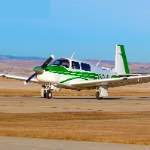
Rocket in landing incident at KHND.
Slick Nick replied to NickG's topic in Mooney Safety & Accident Discussion
Couple things come to mind with that one. CYBW is at 4000’. In all my decades operating out of there, I’ve never had the mixture full rich on departure, especially in my J. You’ll be significantly down on power. Maybe it’s possible that the plane was overloaded? If no mechanical failure, that’s about the time you’d get out of ground effect. -
This is not unprecedented. The flood of '32 was very bad I heard the stories of the old timers talk about it.. '78 wiped out Center Point, TX, taking many lives and campers. '87 was another bad one, taking many RV'ers lives and a school bus of 10 summer campers fleeing the flood waters. Growing up, the river flooded all the time. It was normal to us. If the rain hits Kerrville, the river does not swell so much. If the headwaters of the Guadalupe are hit with heavy rains, as this was the case with all the major floods, seek high ground immediately. This one happened so fast and after midnight. Flood warnings and evacuation warnings were every 15 minutes on my phone starting at 11pm. Knowing all this doesn't make it less sad. The airport is full of choppers and search planes. KERV is definitely serving it's part. Mooney factory has a dry creek that feeds the river but did not backfill enoughto reach inside the factory. I "think" that happend with the '78 flood.
-

Rocket in landing incident at KHND.
Slick Nick replied to NickG's topic in Mooney Safety & Accident Discussion
There was a guy at my local airport who bounced pretty hard this past winter. The plane is still sitting in the weeds with collapsed landing gear, I assume until the insurance company decides what to do with it. According to the accident report, it was on takeoff: C-FGLX, a privately registered Mooney M20J was departing from Calgary/Springbank Airport (CYBW), AB, for Lethbridge Airport (CYQL), AB. After take-off the aircraft climbed to approximately 50 feet AGL and then settled back to the runway. Mixture was full rich; the throttle was full, the propeller control was full fine for the take-off and the engine instruments were indicating in the correct range. The aircraft exited the left side of the runway and contacted an airport sign damaging the left wing and collapsing the left main landing gear. -
Thanks for mentioning the marine layer. When the marine layer is coming inland Gillespie generally clears much earlier than Montgomery field which is an important consideration. Someday Montgomery may not clear till afternoon or not at all. Gillespie is at much less risk of having low ceilings for long. Sent from my iPhone using Tapatalk
-

Rocket in landing incident at KHND.
KLRDMD replied to NickG's topic in Mooney Safety & Accident Discussion
Don't forget the experimental world. Lots of RVs out there now. Mooney cruise speed with Cessna 150 speeds in the pattern. -
Heres a comparison based on public data: Other Mooney Models: Available Data Other Mooney models include the M20 series (M20A through M20V, with the M20R Ovation being a later model) and earlier variants like the M20E and M20F. Key sources provide the following insights: AOPA Safety Review (1995): Analyzed M20-series accidents (1982–1991, covering models like M20J, M20K, older M20C/E/F) with 392 accidents across ~6,500 registered Mooneys (~6% per 100 registered aircraft). Fatal accidents were not broken down by model, but the M20 series had a lower accident rate than comparable retractable-gear aircraft (7.7% per 100 registered aircraft). Aviation Safety (2005): Provided specific rates for newer Mooney models: M20R Ovation: 5.7 overall, 1.9 fatal per 100,000 hours (33% of accidents fatal). M20M Bravo: 6.7 overall, 1.8 fatal per 100,000 hours (27% fatal). M20J 201: 6.4 overall, 1.6 fatal per 100,000 hours (25% fatal). Older models (e.g., M20C/E/F) had higher rates, around 7–8 per 100,000 hours overall, with fatal rates of 2–2.5 per 100,000 hours. Air Facts Journal (2014): Noted that newer Mooneys (e.g., M20R, M20M) have better safety records than older models (e.g., M20C, M20E) due to improved avionics and pilot training. Engine failures are more common in Mooneys than in some competitors, often due to maintenance issues. Landing accidents remain a significant issue across all M20 models due to the low-drag airframe requiring precise airspeed control. NTSB Data (General Mooney Trends): For the broader M20 series, landing accidents typically account for 40–50% of incidents, loss of control for 15–25%, and engine failures for 10–15%, with patterns similar to the M20R but varying by model age and equipment. Estimating Flight Hours for Other Mooney Models The Mooney M20 series has produced ~11,000 aircraft since 1955, with newer models (M20J, M20K, M20M, M20R, etc.) comprising ~4,000–5,000 units. Excluding the M20R (~1,200 units), let’s estimate for other models: Fleet Size: ~9,800 total M20 aircraft, with ~3,000–4,000 for newer models (M20J, M20K, M20M) and ~5,000–6,000 for older models (M20C, M20E, M20F). Flight Hours: Assuming 150–200 hours/year per aircraft (similar to M20R), over 40 years for newer models (1985–2025) and 60 years for older models (1965–2025): Newer models: ~3,500 aircraft × 175 hours/year × 40 years ≈ 24,500,000 hours. Older models: ~5,500 aircraft × 175 hours/year × 60 years ≈ 57,750,000 hours. These are rough estimates, as older aircraft may fly less, and exact hours are unavailable. Comparison Overall Accident Rate: M20R Ovation: 1.01 per 100,000 hours (estimated here), 5.7 per 100,000 hours (2005 estimate). Other M20 Models: M20M Bravo: 6.7 per 100,000 hours (2005). M20J 201: 6.4 per 100,000 hours (2005). Older models (M20C/E/F): 7–8 per 100,000 hours (2005). AOPA (1982–1991): ~6% per 100 registered aircraft (~392 accidents for ~6,500 aircraft). Comparison: The M20R’s accident rate is lower than or comparable to other newer Mooney models (M20J, M20M) and significantly lower than older models (M20C/E/F). The AOPA data suggests the M20 series as a whole has a slightly lower accident rate per registered aircraft than comparable GA aircraft, and the M20R, being a newer model, likely benefits from improved design and avionics. Fatal Accident Rate: M20R Ovation: 0.23 per 100,000 hours (estimated here), 1.9 per 100,000 hours (2005 estimate), 22.73% of accidents fatal. Other M20 Models: M20M Bravo: 1.8 per 100,000 hours, 27% fatal (2005). M20J 201: 1.6 per 100,000 hours, 25% fatal (2005). Older models: 2–2.5 per 100,000 hours, ~30–35% fatal (2005 estimates). Comparison: The M20R’s fatal accident rate (per 2005 data) is similar to the M20M and M20J but lower than older models. The percentage of fatal accidents (22.73%) is slightly lower than the M20M (27%) and M20J (25%) and significantly lower than older models (30–35%), reflecting improved safety in newer Mooneys. Landing Accidents: M20R Ovation: 31 out of 66 (46.97%), with 5 botched/improper go-arounds (16.13% of landing accidents, 7.58% of total accidents). Other M20 Models: AOPA and Air Facts Journal indicate landing accidents account for 40–50% of M20-series accidents, consistent across models due to the Mooney’s low-drag airframe and laminar flow wing, which demand precise airspeed control. The M20J and M20M likely have similar landing accident proportions to the M20R, while older models (M20C/E/F) may have slightly higher rates due to less advanced avionics and pilot training. Go-Arounds: No specific data isolates go-around accidents for other M20 models, but the Air Facts Journal notes that Mooneys, including the M20R, are prone to landing issues like floating or stalling during go-arounds if airspeed is mismanaged. The M20R’s 16.13% go-around-related landing accidents is likely representative of newer models (M20J, M20M), while older models may have higher rates due to less forgiving handling characteristics. Comparison: The M20R’s landing accident rate (46.97%) is within the 40–50% range for the M20 series. The go-around issue (16.13% of landing accidents) is likely similar across newer models, as the M20R, M20J, and M20M share similar aerodynamic traits. Older models may have a higher incidence of landing mishaps due to less sophisticated systems. Loss of Control: M20R Ovation: 16.67% of accidents (11 out of 66), 66.67% of fatal accidents (10 out of 15). Other M20 Models: Loss of control accounts for 15–25% of M20-series accidents, with a high proportion of fatal accidents (50–70%), per NTSB and AOPA data. VFR-into-IMC and spatial disorientation are common causes across all M20 models, exacerbated by the Mooney’s high-performance characteristics. Comparison: The M20R’s loss-of-control rate (16.67%) and its dominance in fatal accidents (66.67%) are consistent with other M20 models. Newer models (M20J, M20M) may have slightly lower rates due to better avionics (e.g., glass cockpits), but the pattern remains similar. Engine Failure: M20R Ovation: 9.09% of accidents (6 out of 66), 13.33% of fatal accidents (2 out of 15). Other M20 Models: Engine failures account for 10–15% of M20-series accidents, with maintenance issues (e.g., fuel flow, oil starvation) frequently cited, per Air Facts Journal. Older models (M20C/E/F) have higher engine failure rates due to aging engines and less rigorous maintenance. Comparison: The M20R’s engine failure rate (9.09%) is slightly lower than the M20-series average (10–15%), likely due to its newer engine design (Continental IO-550). Fatal engine failure outcomes are comparable across models. Key Observations Overall Accident Rates: The M20R Ovation’s accident rate (1.01–5.7 per 100,000 hours) is lower than or comparable to newer M20 models (M20J: 6.4, M20M: 6.7) and significantly lower than older models (7–8 per 100,000 hours). This reflects improvements in design, avionics, and pilot training in newer Mooneys. Fatal Accident Rates: The M20R’s fatal rate (0.23–1.9 per 100,000 hours, 22.73% fatal) is similar to the M20J (1.6, 25%) and M20M (1.8, 27%) but lower than older models (2–2.5, 30–35%), indicating better safety in newer models. Landing Accidents: The M20R’s 46.97% landing accident rate aligns with the M20-series range (40–50%). Botched/improper go-arounds (16.13% of landing accidents, 7.58% of total) are likely similar in newer models (M20J, M20M) due to shared aerodynamic challenges (low-drag airframe). Older models may have higher landing accident rates due to less forgiving handling. Loss of Control: The M20R’s loss-of-control rate (16.67%, 66.67% of fatal accidents) is consistent with the M20-series pattern (15–25%, 50–70% fatal), driven by VFR-into-IMC and high-performance characteristics across all models. Engine Failure: The M20R’s engine failure rate (9.09%) is slightly lower than the M20-series average (10–15%), reflecting newer engine reliability, but maintenance remains a concern across all models. Limitations Flight Hour Estimates: The M20R’s estimated hours and other M20 models’ hours are rough, as exact data is unavailable. The 2005 Aviation Safety estimates are more precise but dated. Data Age: AOPA (1982–1991) and Aviation Safety (2005) data may not fully reflect current trends, though newer Mooneys (like the M20R) benefit from modern safety features. Conclusion The Mooney M20R Ovation’s accident profile is similar to other newer Mooney models (M20J, M20M), with a slightly lower overall accident rate (1.01–5.7 vs. 6.4–6.7 per 100,000 hours) and comparable fatal accident rate (0.23–1.9 vs. 1.6–1.8 per 100,000 hours). Its landing accident rate (46.97%) and go-around issues (16.13% of landing accidents) align with the M20-series range (40–50%), driven by the Mooney’s demanding low-drag airframe. Older models (M20C/E/F) have higher accident and fatal rates due to aging systems and less advanced avionics. Loss of control remains a significant fatal risk across all M20 models, particularly in IMC. Enhanced training on go-arounds, airspeed control, and maintenance could further improve the M20R’s safety relative to other Mooney models.
-
Here's the answer to the "go-around" question Total Botched/Improper Go-Around Accidents: 5 19 Mar 1999 (HB-DID): Pilot lost control during go-around. 7 Jul 2000 (ZS-OEG): Go-around with insufficient runway, ending on wrong side of drag curve. 5 Apr 2006 (N4654M): Failure to maintain airspeed during go-around, resulting in stall/mush. 1 Jul 2007 (N321MD): Failure to attain proper touchdown point, failure to initiate go-around. 29 Jan 2011 (N64FM): Delayed go-around decision, wing striking trees, excessive speed. Note: The 12 May 2007 (OE-KMO) accident (stalled after multiple landing attempts) is included, as multiple landing attempts likely involved botched go-arounds leading to a stall, though not explicitly stated. Step 2: Calculate Percentages Total Accidents: 66 Total Landing Issues Accidents: 31 Botched/Improper Go-Around Accidents: 5 Percentage of Total Accidents: (5 / 66) × 100 = 7.58% Percentage of Landing Issues Accidents: (5 / 31) × 100 = 16.13% Step 3: Summarize Results Table: Botched/Improper Go-Around Accidents Category Number of Accidents Percentage of Landing Issues Percentage of All Accidents Botched/Improper Go-Arounds 5 16.13% 7.58% Other Landing Issues 26 83.87% 39.39% Total Landing Issues 31 100.00% 46.97% Summary Number of Botched/Improper Go-Around Accidents: 5 out of 31 Landing Issues accidents. Percentage of Landing Issues Accidents: 16.13% (5 out of 31). Percentage of Total Accidents: 7.58% (5 out of 66). Key Observations: Improper go-arounds are a notable but not dominant subset of landing accidents, often involving delayed decisions, airspeed mismanagement, or loss of control during the go-around maneuver. The majority of Landing Issues accidents (83.87%) involve other causes, such as improper flares, bounced landings, or mechanical failures.
-
Just to be clear, this analysis is ONLY M20R models and does not state that Ovations are any more or less susceptible to accidents than any other Mooney model. Any yes, I fed the data into AI and then edited/clarified as necessary.
-
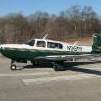
Rocket in landing incident at KHND.
NickG replied to NickG's topic in Mooney Safety & Accident Discussion
@donkaye, MCFII’m assuming they’re quite nose heavy as well? -
Nathan K joined the community
-
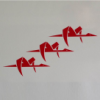
Rocket in landing incident at KHND.
47U replied to NickG's topic in Mooney Safety & Accident Discussion
I think the spinner took out the TAXIWAY E sign which would account for the prop blade bent under, and the remnants of the sign are lodged in the horizontal stab. A runway light might have been involved, too. -
Let's see if one of our more electrically-minded members can comment on this. I don't think all Mooney ammeters are wired the same.
-
Easy peasy… I used a much larger button and stepped the attachment bracket aft to (hopefully) prevent disconnecting when I wanted to xmit, or vice versa. Now I need to get the autopilot installed. A point of caution. Mounting the switch bracket on the front of the yoke using the clock holes is preferred. Mounting on the back side of the yoke like I have, when I updated the instrument panel to a flat panel and put in the Aspen, there was minimal clearance between the switch bracket and buttons on the Aspen when the yoke was full-forward. Can’t be having that now, can we. I ordered the updated yoke shafts from Mooney which are 1.5” longer and that gives me plenty of clearance. Bonus, I retired the yoke shaft inspection AD at the same time.
-
Dammit Bill started following M20K V band coupling
-
Yup Sent from my iPhone using Tapatalk
-
1991 J model MSE. When I’m down around half tanks, in turbulence, my right side gauge will dip down to zero and come back to half, seemingly in response to the bumps. When it does this, my “R LOW FUEL” annunciatior also lights. It sort of flickers in conjunction with the gauge. I have confirmed that there is fuel in the tank. Trying to determine if this is an issue with the inboard sensor on the right wing, or perhaps wiring somewhere along the line before I send it into the shop for diagnosis. Any hints on where to start?
-
Aren't those numbers fairly consistent with overall GA breakdowns? None of those numbers are getting a "wow!" from me. Except maybe that only 87% of landing accidents involve issues with pilot technique - that sounds low.
-
It really is unknowable which model is “safer” for at least this set of reasons: small number of incidents. Each new incident can meaningfully change the conclusion. no certainty on the denominator, definition or size. Is it hours flown? Landings? Miles? planes not uniformly equipped. If icing is a big contributor, can I eliminate or discount that from my analysis b/c I’m FIKI? Should the number of incidents in FIKI-eligible planes be inflated because *some* have FIKI and are presumably less subject to icing issues? But where I believe this phase-of-flight analysis can be useful is to find patterns in the hazardous phases of flight. For example, if the M20R has a high concentration of landing LOC mishaps, that should be a training and transition focus. It is a very different thing to say: “20% of Ovation mishaps are Landing LOC” vs “Ovation landing LOC mishaps happen twice as frequently as they do in M20E models.” Another example of concentrated risk by phase of flight would be base-to-final and especially go-around upswing-to-crosswind stall/spin wrecks in the Cirrus line. They stick out bigly, and I’ve had the misfortune of witnessing one. -dan
-
I can't let a post recommending Signature pass without comment. According to the Signature Aviation web site, fees for San Diego SAN for a piston single are as follows: Handling fee $40 waived with minimum fuel purchase. Infrastructure fee $8 per stay. Parking $115 per night. $115 is not a typo, and that's outside parking, hangar is $625 a night. Avgas is currently $9.18 per gallon. Matt didn't say when he was there, but that would be one hell of an Uber ride to cost more than those fees. Signature has done more to ruin general aviation than any other entity I am aware of. Use them at your own peril. I've used Crown Air at MYF. Busy but no complaints. Jon
-
I agree that it is usually the field wire on the alternator that vibrates/fatigues loose. That happened to me over desolate West Texas/Eastern New Mexico about 25 years ago. But something doesn't make sense. If that happened or alternator failure of any kind happened - then first, the Ammeter would start pegging to the left with a constant drain on the battery. Then the Low Volts light would come on as the battery voltage dropped with the power draw. Those indications on the panel normally gives the pilot time to shut down unnecessary Nav/Comms, lights, etc. and conserve battery power. But you say the Ammeter was centered which means no draw on the battery. And that your Nav/Comms reset/restarted a couple times which meant they experienced complete loss of power (not just low volts). Could it be related to the Main power solenoid - either the solenoid or the main power switch on the panel or the wiring to it?
-
YUP Nice professional quality work Just the way it should be for a well trained disciplined pilot! Tip of the hat to you As noted check the field wires on the back of the alternator first.



